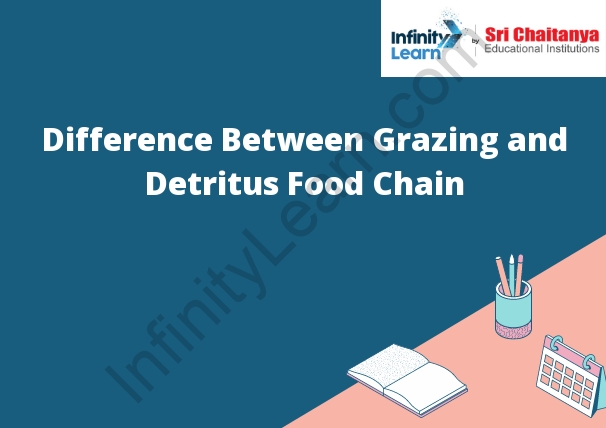Table of Contents
What is the Food Chain?
The food chain is a model that shows how energy flows through an ecosystem. The food chain starts with producers, which are plants that get their energy from the sun. Herbivores eat the plants, and carnivores eat the herbivores. The energy from the sun is passed from one organism to the next until it is used up.

Grazing Food Chain
A grazing food chain is a food chain in which the primary consumer eats plants that grow in close proximity to the ground. The plants are typically grasses or other small plants. The primary consumer is typically a herbivore, such as a deer, a rabbit, or a cow. The secondary consumers are typically carnivores, such as a wolf, a hawk, or a lion.
Detritus Food Chain
The detritus food chain is a model that illustrates the flow of energy through a food web. The model starts with producers, which are plants that create their own food from sunlight and minerals in the soil. Detritivores, such as earthworms and beetles, eat the dead leaves and other plant debris that fall to the ground. These animals are then eaten by predators, such as hawks and foxes. The predators are in turn eaten by other predators, and so on. The detritus food chain illustrates how energy flows from the sun to the producers, to the consumers, and finally to the decomposers.
Difference Between Grazing and Detritus Food Chain
The grazing food chain involves the transfer of energy from plants to herbivores and then to carnivores. The detritus food chain, on the other hand, involves the transfer of energy from dead plants and animals to detritivores and then to other organisms.
The grazing food chain is usually more efficient because it involves the transfer of energy from one living organism to another. The detritus food chain, on the other hand, is less efficient because it involves the transfer of energy from dead plants and animals to other organisms.
Implications of Grazing Food Chain
Grazing food chains are a type of food chain in which the first level of consumers are animals that eat plants. The animals that eat the plants are called grazers, and the plants that the grazers eat are called grasses.
Grazing food chains are important because they help to recycle nutrients back into the soil. Grazers eat the tops of the plants, which helps to keep the plants from getting too tall. This allows the plants to continue to photosynthesis, which helps to recycle nutrients back into the soil. Grazing also helps to control the populations of plants and animals.
Implications of Detritus Food Chain
The detritus food chain is a model of energy flow in ecosystems. Detritus is organic matter that has been broken down by decomposers. In the detritus food chain, decomposers are the first link in the food chain. They consume dead organic matter and use the energy in the molecules to produce new organic matter. This new organic matter is consumed by herbivores, which are the second link in the food chain. Herbivores consume plants, and the energy in the plants is used to produce new organic matter. This new organic matter is consumed by carnivores, which are the third and final link in the food chain. Carnivores consume other animals, and the energy in the animals is used to produce new organic matter.
The detritus food chain is important because it transfers energy from one organism to another. In addition, the detritus food chain is a good model of how energy is used in ecosystems.








